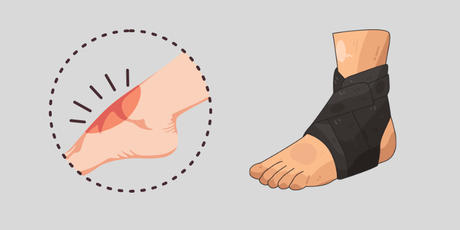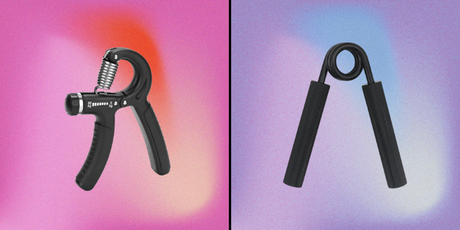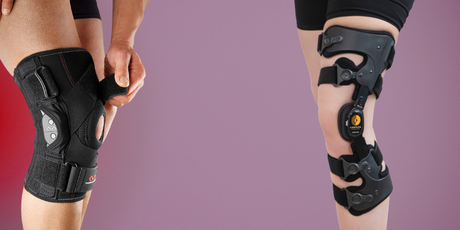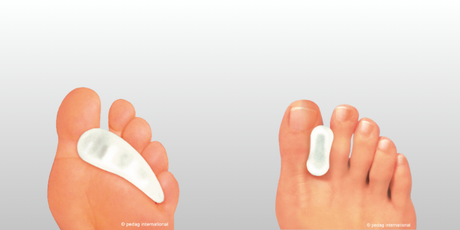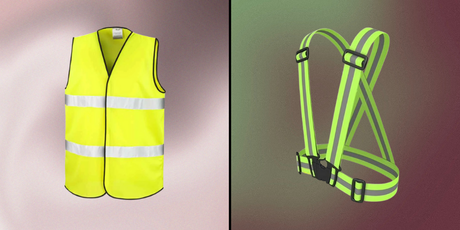Did you know a skipping exercise routine can significantly improve cardiovascular fitness, coordination, and full-body strength? That’s more than many forms of traditional cardio.
Surprisingly, skipping is an easily accessible, total-body workout that builds rhythm, coordination, and muscular endurance. Whether you’re looking for skipping for beginners tips or advanced skipping rope exercises, this dynamic workout delivers remarkable results. Furthermore, a structured skipping exercise routine can enhance stamina, mobility, and overall body control in just 15 minutes, making it perfect for busy schedules.
In fact, HIIT skipping workouts should last no longer than 20–30 minutes, meaning you get all the benefits of a challenging cardio session and a cool-down in less than an hour. We’ve created this comprehensive guide to help you master the basics and progress to more demanding routines. From choosing the right rope to creating effective workout plans, we’ll show you how to do skipping exercise correctly from day one.
Ready to jump into a fitness routine that develops coordination, strength, and endurance in minimal time? Let’s get started!
Why skipping is the perfect beginner workout
Skipping stands out as an exceptional exercise for beginners because it delivers full-body benefits with minimal requirements. Unlike many fitness trends that demand expensive equipment or special facilities, skipping offers accessibility alongside versatility.
Low cost, high value
The financial barrier to starting a skipping exercise routine is remarkably low. While a gym membership can cost at lot, and does so every month, a quality skipping rope can be purchased just once. Additionally, skipping requires minimal space - just enough room to swing the rope - making it perfect for small flats, hotel rooms, or outdoor spaces.
→ Are you looking for a rope of your own? Check out our collection of skipping ropes, full of high-quality options.
Beyond affordability, skipping delivers exceptional physical returns. Research indicates that just 10 minutes of skipping can improve cardiovascular endurance, agility, and rhythm, making it one of the most time-efficient fitness exercises available. Moreover, the repeated, controlled contact with the ground strengthens bones and enhances joint stability.
Full-body benefits in one move
While many exercises target specific muscle groups, a skipping exercise routine engages your entire body simultaneously. During a skipping session, you’ll activate:
- Lower body: calves, quadriceps, hamstrings, and glutes
- Core: abdominals and obliques
- Upper body: shoulders, biceps, triceps, forearms, and back muscles
This comprehensive muscle engagement explains why skipping strengthens balance, coordination, and reaction time during consistent sessions. Additionally, the rhythmic movement of skipping trains your brain and body to work in harmony, improving motor skills and overall fitness.
How skipping compares to other cardio
When measured against popular cardio options, skipping consistently outperforms in terms of overall fitness gains. Specifically, half an hour of moderate-intensity skipping improves cardiovascular endurance, coordination, and agility, whereas running primarily targets endurance, cycling develops lower body stamina, and swimming emphasizes muscular endurance in a lower-impact environment.
Studies show that 10 minutes of skipping provides similar cardiovascular and coordination benefits as 30 minutes of jogging. Furthermore, skipping produces up to 50% less impact on knees compared to running, making it particularly suitable for those seeking low-impact intensity. Although both activities improve cardiovascular health, skipping develops additional skills like coordination, rhythm, and agility that running alone doesn’t address.
Getting started: Skipping for beginners
Starting your skipping journey requires the right equipment and technique. Before attempting your first jump, understanding the fundamentals will help you build a sustainable skipping exercise routine and avoid frustration.
Choosing the right skipping rope
Selecting an appropriate skipping rope involves considering three key factors: material, weight, and length. Initially, most beginners reach for inexpensive PVC ropes, yet these lightweight options often make learning more difficult as they provide minimal feedback when rotating. Instead, opt for a slightly weighted rope (around 1/2 LB) which allows you to feel the rotation and helps establish proper rhythm.
For beginners, cloth or beaded ropes offer the ideal balance of weight and control. Remember that your height determines the ideal rope length—generally, choose a rope approximately one metre taller than your height. To check if your rope fits properly:
- Stand in the middle of the rope with both feet together
- Pull the handles upward until the rope is taut
- The end of the cable (excluding handles) should reach your sternum or armpits
How to do skipping exercise with proper form
Proper technique begins with correct hand positioning. Hold the handles with your elbows close to your ribs, positioning your hands roughly the same distance from the centerline of your body. The rotation should come from your wrists, not your elbows or shoulders.
For effective jumping:
- Keep your feet close together
- Land softly on the balls of your feet
- Jump only max five centimeters off the ground
- Maintain slightly bent knees throughout
- Keep your head up, chest out, and shoulders back
- Use your wrists to turn the rope
Common mistakes to avoid early on
Even seasoned jumpers struggle with certain skipping errors. Excessive arm movement is perhaps the most common mistake—remember that your wrists should generate the rotation while your arms remain relatively still. Likewise, jumping too high wastes energy and increases joint impact.
Another frequent error is using a rope that’s too long, which forces poor form and wider arm positioning. Also beware of "donkey kicks" (kicking feet backward) or tucking knees while jumping, as these movements disturb your balance and rhythm.
Throughout your practice, focus on landing softly and maintaining consistent, controlled movements. Using a mirror during practice sessions helps identify symmetry issues in your technique. After mastering the basic jump, you can progress to more advanced footwork patterns to expand your skipping routine.
Beginner skipping exercise routine
A well-structured skipping exercise routine begins with proper preparation and ends with effective recovery. To maximize your results and minimize injury risk, follow these evidence-based components for a complete workout.
5-minute warm-up to prepare your body
Properly warming up increases blood flow to muscles and prepares joints for activity. Begin with 30 seconds of basic bounces, keeping jumps low at around 60–70 beats per minute. Follow with 30 seconds of side straddles (similar to jumping jacks). Perform 8 reverse lunges, alternating legs, then 30 seconds of heel taps. Complete with 30 seconds of hip twists and 8 squats with hip rotations. This sequence prepares joints for impact and increases flexibility.
Basic skipping rope exercises to start with
As a beginner, focus on mastering these fundamental techniques first:
- Basic Jump: Keep feet together with a slight knee bend, jumping only 2 to 5 centimeters off the ground
- Single Leg Jump: Balance on one leg at a time, jumping 15 seconds per leg
- Skier Jump: Jump side-to-side while keeping feet together
- Boxer Step: Alternate weight between feet with each jump
10-minute HIIT skipping routine for beginners
This simple yet effective HIIT routine alternates between work and rest:
- Jump rope (basic bounce) – 30 seconds
- Rest – 30 seconds
- Repeat for 10 rounds
For variety, try this 10-minute circuit:
- 30 seconds jump rope
- 30 seconds bodyweight exercise (push-ups, squats)
- Repeat for 5 minutes
- Rest 60 seconds
- Repeat once more
Cool down and stretch after skipping
A proper cool-down gradually reduces heart rate and prevents stiffness. Stretch while muscles are warm to improve flexibility and recovery. Hold each stretch for 10–15 seconds:
- Quadriceps: Standing, hold one foot behind you
- Hamstrings: Rest foot on elevated surface, lean forward
- Calves: Step forward with one leg, lower opposite heel
- Buttock stretch: Lie down, cross one leg over opposite thigh
- Thigh stretch: Lying on side, pull heel toward buttock
Progressing your skipping routine
After mastering the basics, advancing your skipping exercise routine requires strategic progression. Once comfortable with fundamental techniques, you’re ready to expand your training horizons.
How to increase intensity safely
Consistency matters more than duration when advancing your practice. Start with 10–15 minutes, three times weekly, building up gradually. For safe progression, first extend your workout duration before increasing intensity. Subsequently, incorporate weighted ropes to add resistance without lengthening sessions, improving muscular endurance.
Beyond basic jumps, learn these five primary techniques to challenge yourself:
- Alternate foot step
- Boxer step
- Side swing
- Cross-over
- Double under
Adding bodyweight moves to your skipping sets
Pairing skipping with bodyweight exercises creates versatile, effective workouts. Mountain climbers enhance endurance and core strength. Likewise, planks improve core stability, push-ups build upper body strength, and squats target lower body.
Consider this simple circuit:
- 50 rope jumps
- 15 push-ups
- Repeat for 3–5 rounds
Creating a weekly skipping exercise routine
For optimal results, design a weekly routine alternating between different workout styles. Structuring workouts using short, intense intervals maximizes strength, agility, and coordination.
A balanced weekly plan might include:
- Monday: Basic skill development (30 seconds skipping / 30 seconds rest × 18 sets)
- Wednesday: Conditioning intervals with single-leg jumps
- Friday: HIIT workout (alternating skipping with bodyweight exercises)
Conclusion
Skipping stands out as one of the most accessible and effective workouts available today. Throughout this guide, we’ve seen how this simple activity enhances cardiovascular fitness, coordination, and full-body strength—all without complex equipment or large spaces.
The beauty of skipping lies in its simplicity. You need only a quality rope and enough space to swing it. Nevertheless, this straightforward exercise develops endurance, agility, and multiple muscle groups at once. Additionally, the low-impact nature is gentle on joints compared to running, while still delivering impressive intensity.
Anyone can begin a skipping journey regardless of fitness level. Start with the basic techniques outlined above, then gradually progress to more challenging variations as your skills improve. Remember that proper form matters more than speed or duration when first learning. Focus on mastering the fundamentals before attempting advanced moves.
Your skipping routine should evolve as your fitness improves. The structured workout plans provided offer a solid foundation, but feel free to adjust them based on personal goals and available time. Consistency proves more valuable than occasional intense sessions—even short, regular workouts yield significant improvements over time.
Skipping transforms from a childhood game into a powerful fitness tool once you understand its principles. The workouts described here require just minutes of your day yet develop full-body strength, endurance, and coordination. Grab a rope, clear some space, and take your first jump toward better fitness today. Your body and mind will thank you!




